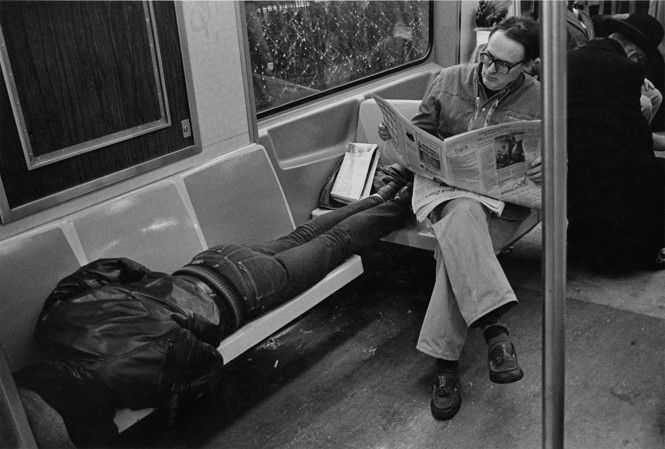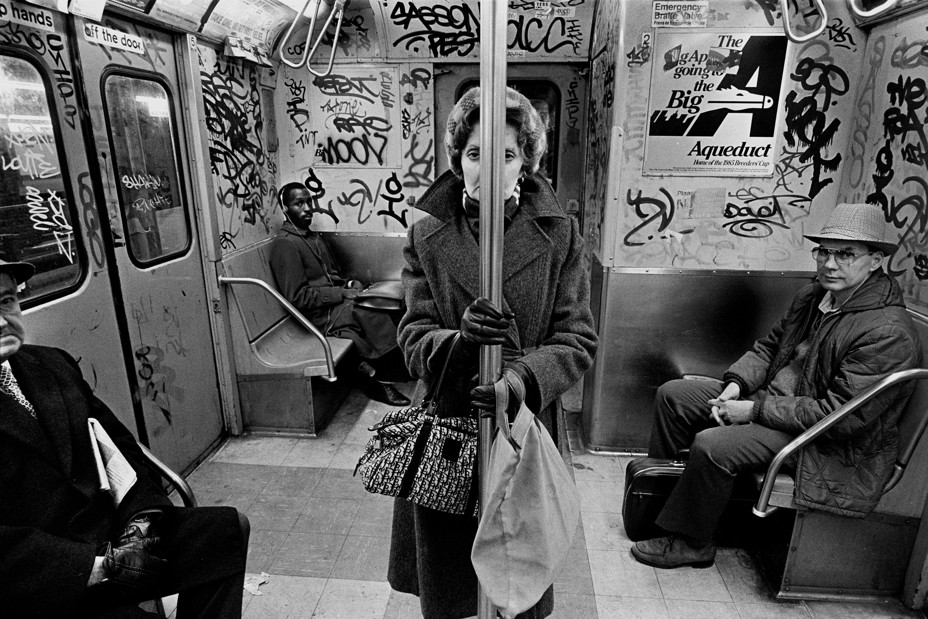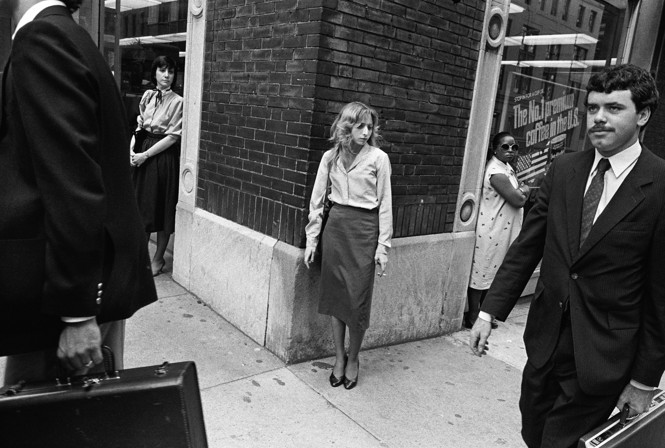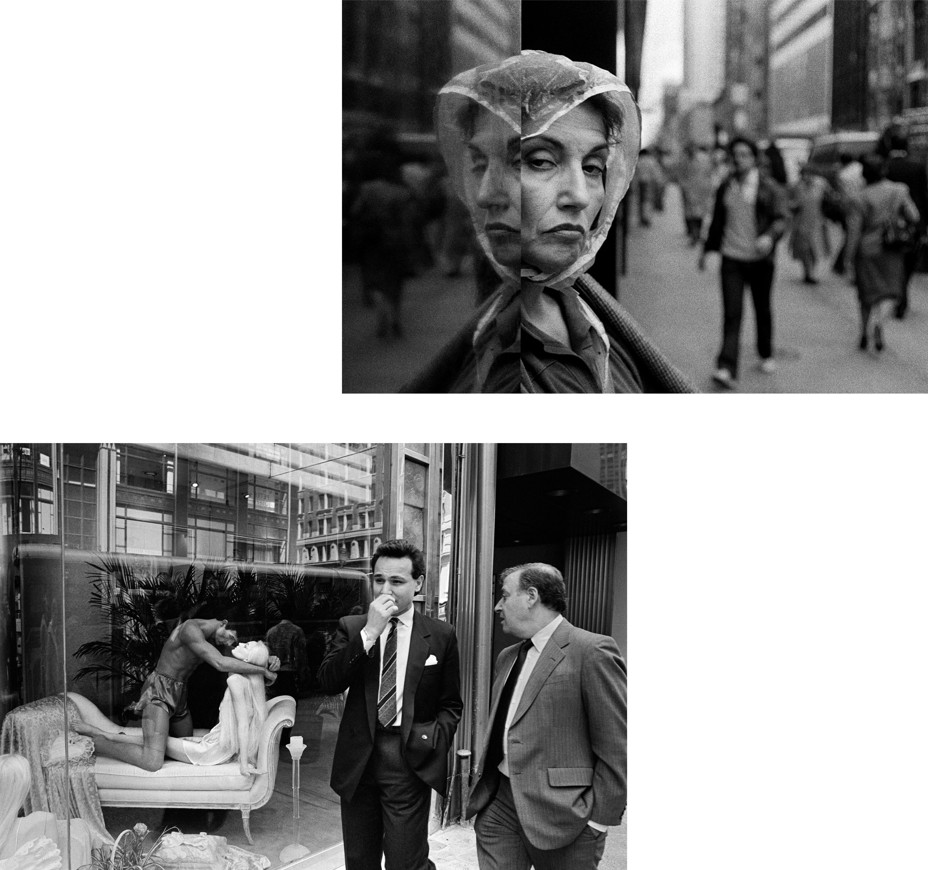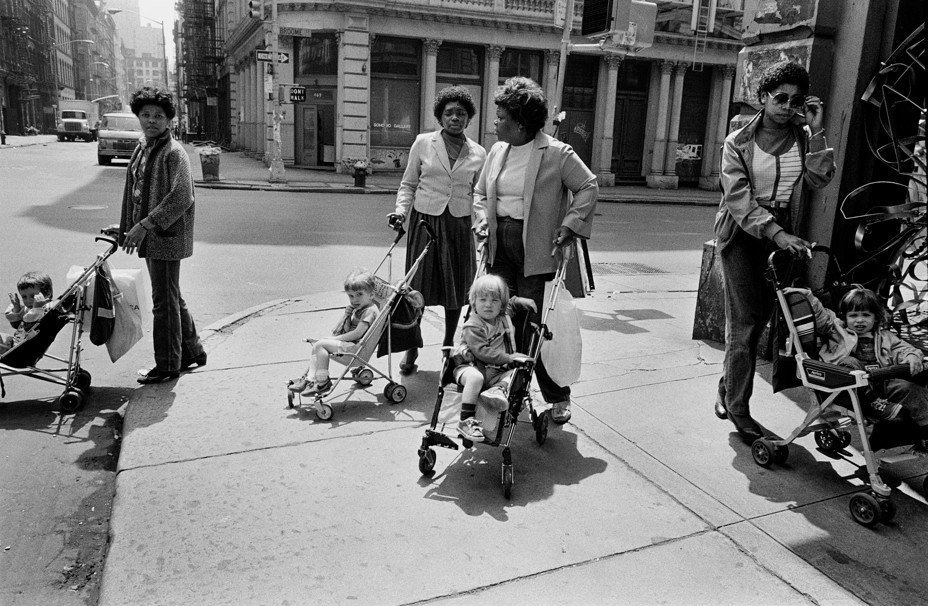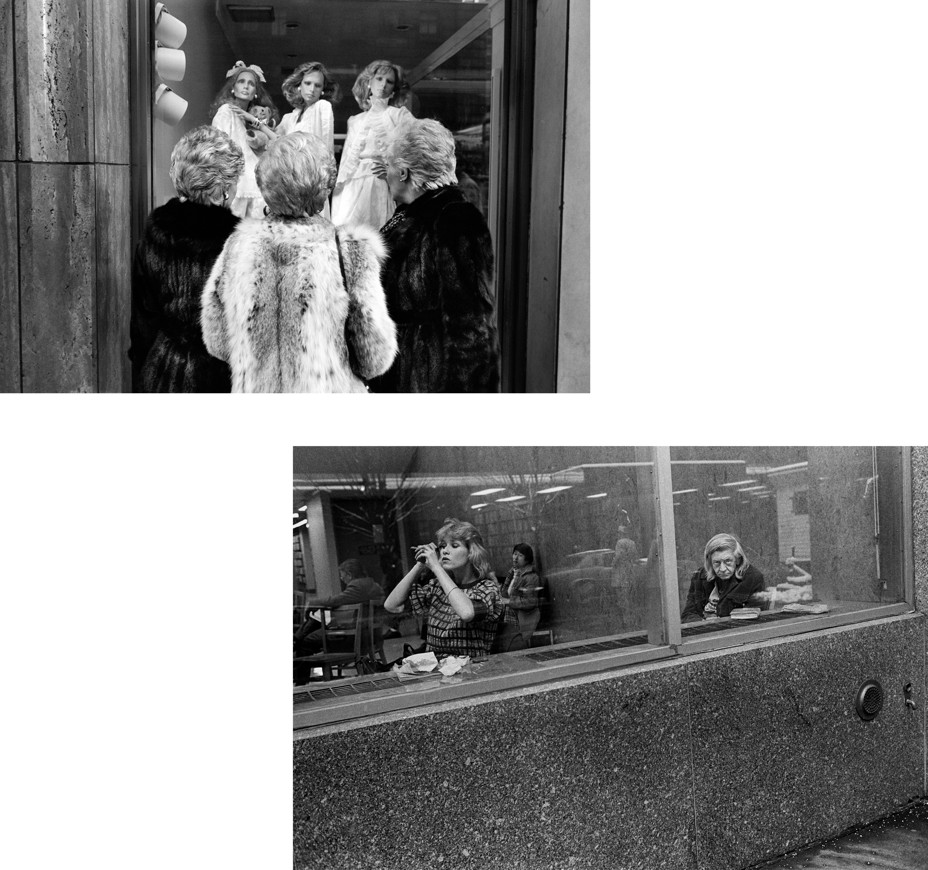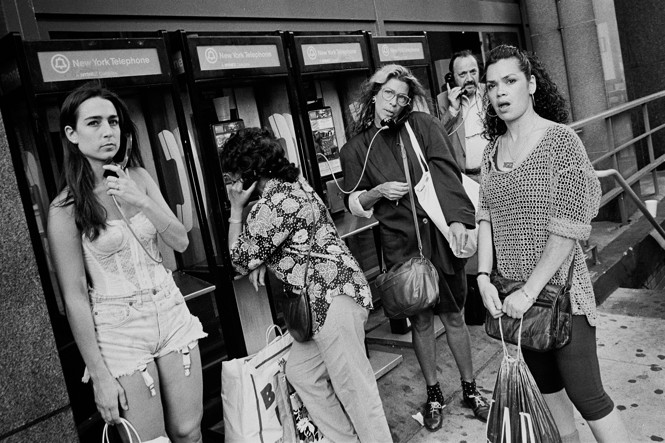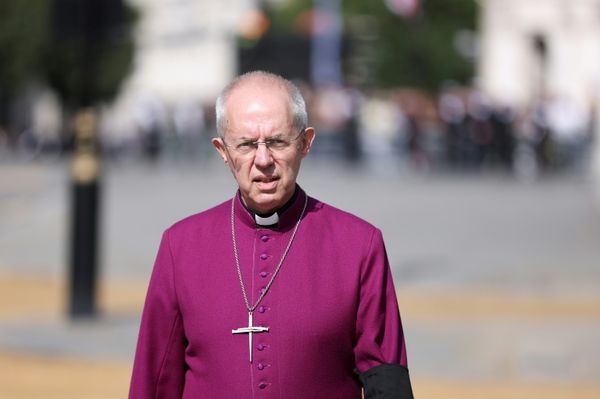
Photographs by Richard Sandler
Richard Sandler’s photographs of New York, taken from the late 1970s to the early ’90s, seem straightforward at first: portraits of everyday city life composed with deceptive casualness, as if Sandler, and not just his subjects, were simply passing by and happened to catch an onlooker’s eye. But on the public stage of a street, the subway, or a tree-shorn park, a mundane interaction can take on strange airs. And the exchanges Sandler documents—unfiltered and spontaneously intimate—look a bit like artifacts today. Three years ago, the pandemic emptied out once-busy streets; subsequently, for many of us, it engendered a newly awkward relationship to public proximity. This archive, capturing a bygone era, feels both nostalgic and unnerving.
Physical contact is everywhere in these photos, which are on view at the Bronx Documentary Center until March 26. Friends and strangers alike lean against one another and also against telephone booths, brick walls, and tempered glass. Even inanimate bodies engage in unfiltered embrace, as with two mannequins, plastic legs intertwined and plastic faces nearly touching, on display in a storefront window. Sandler’s camera, in fact, turns even the quietest scenes into exhibitionist displays. He zooms in on a man whose face is pressed to a subway pole, framing the commuter’s stolen meditation as a brazen kiss. Over that man’s shoulder, another commuter peers directly at the lens: Privacy is a rare commodity in New York, and the photographer is almost always being watched as well. For every engrossed pedestrian that Sandler snaps unawares, another subject snaps right back.
In one photograph, three Black women stand together on a sidewalk; opposite them is a white woman, whose profile takes up almost half of the frame. The encounter feels fleeting, not least because there is a flash of another pedestrian in the background. But one face stands out, sharp and settled: that of the woman who eyes the camera without a smile. Her unabashed gaze puts our own into question: What exactly are we looking at?
The work is energized by these silent conversations, which range from ambiguous to charged. But some photos depict one-sided observation, such as one that juxtaposes a man sitting upright, reading a newspaper on the train, with a fellow passenger, who lies facedown across a row of seats, feet nestled beside the aloof reader. We can’t see the face of the prone traveler. What might they have said had their gaze confronted Sandler’s?
Other images in the set feel less like fixed stares and more like sideways glances, ones that brim with gentle, undemanding curiosity about passersby. In a shot of a train car, we see a group of people rubbing shoulders with loved ones and strangers, all brought together by the impromptu intimacy that comes with moving through New York. Everyone is looking in a slightly different direction; for at least the next few moments, they are going in the same one.
